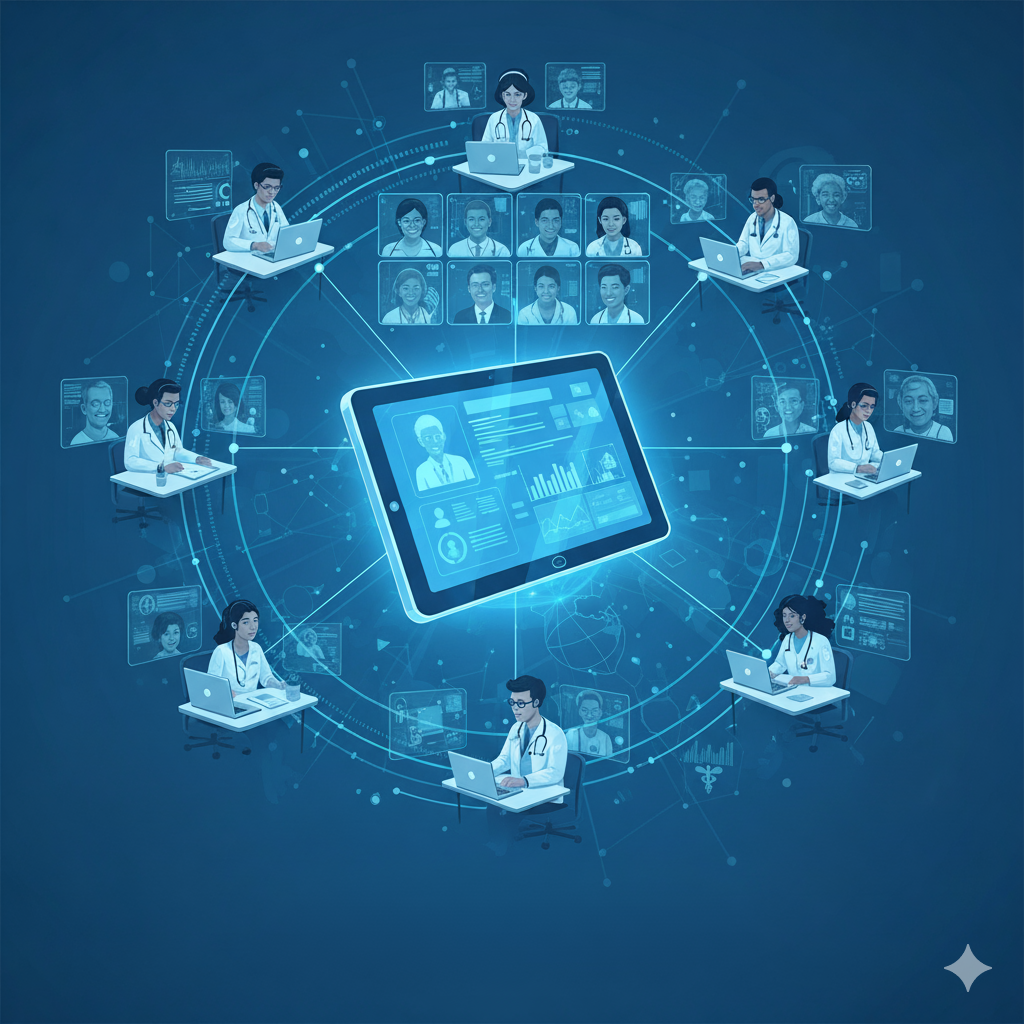As telehealth and remote consultations become more common, healthcare teams face new challenges. Without face-to-face visits, it can be more challenging to maintain comprehensive patient information, coordinate care efficiently, and ensure continuity. Fragmented notes, delayed updates, and missing context can all affect the quality of care delivered. Digital health records, also known as digital medical records, offer a practical solution, enabling clinicians to access, organise, and share patient information efficiently while supporting high-quality remote consultations.

.png)
Collaborative dictation and transcription
One of the main benefits of digital medical records is the ability to capture consultations in real time using AI-assisted transcription. Clinicians can dictate notes during telehealth sessions, and drafts are shared immediately with the relevant team members. This ensures everyone involved in patient care has the latest information, reducing errors and miscommunication. Maintaining a clear naming and tagging system helps track the progress of each note, making it easier for teams to review and update information as needed. Collaborative dictation allows clinicians to focus on patients rather than administrative tasks, making remote care more efficient and accurate.
.png)
Smart drafting with version control
Digital medical records support iterative drafting, which is particularly valuable for complex consultations. AI can generate multiple drafts, which clinicians can refine with input from colleagues. Keeping several versions of each note allows the team to track changes and maintain a high level of accuracy. By reviewing and updating drafts collaboratively, clinicians ensure that final records are comprehensive and reliable. Version control also helps teams identify patterns or trends in patient care, supporting better decision-making for future consultations. This combines the speed of AI with the oversight of experienced clinicians to maintain quality in documentation.
.png)
Structured approval workflow
A clearly defined approval workflow helps healthcare teams manage notes efficiently. Digital medical records allow clinics to implement a draft, review, and approval process that assigns specific responsibilities to team members. This ensures accountability and prevents errors, particularly when multiple people contribute to patient documentation. Final approvals maintain quality standards and provide a clear record of who validated the information. With structured workflows in place, clinicians can confidently rely on digital medical records to support telehealth consultations without compromising accuracy or compliance. Structured workflows like this also save time.
.png)
Integrated patient context
Digital medical records can automatically integrate patient history, lab results, imaging reports, and referral notes into AI-assisted drafts. This reduces manual data entry and helps prevent errors while providing clinicians with a complete view of the patient. Before finalising any notes, it is important to verify patient-specific details to ensure accuracy. Integrated context helps healthcare teams make informed decisions, even when consultations are remote, and ensures that patients receive consistent, personalised care. By pulling together all relevant information, digital medical records support clinicians in providing high-quality care, regardless of location.
Have a question?